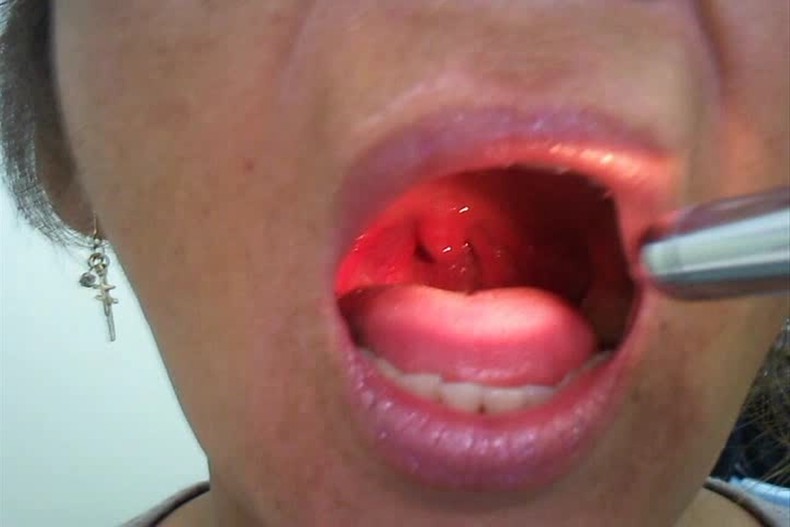Description
A 49-year-old woman with no medical history started to show difficulty in speaking 1 year earlier. She was not taking any antipsychotics. Except for difficulty in speaking, her neurological examination results were normal. Her brain MRI was unremarkable and no causative abnormality was found in her blood test, including copper and ceruloplasmin levels and thyroid parameters. A neuropsychiatric consultation revealed no depression or psychiatric problem. The patient eventually noticed the dramatic amelioration of her symptoms when chewing gum or pressing her neck (video 1). These could have been acting as sensory tricks for her isolated speech-induced lingual dystonia.1 There was no history of orofacial injury or recent viral infection that could have caused secondary lingual dystonia. Trihexyphenidyl (up to 8 mg/day) or diazepam (up to 4 mg/day) had no benefit and induced severe dry mouth or sleepiness. We also tried baclofen starting at 5 mg/day, however, the patient reported sleepiness at that dose; it was stopped. We applied these drugs separately. To rule out dopa-responsive dystonia (DYT5) and Parkinson's disease, we attempted levodopa/carbidopa treatment (up to 300 mg), but with no benefit.
The patient narrated a Japanese proverb. There was no involuntary movement of her tongue at rest. When she chewed gum or pressed her neck with her hands, she spoke fluently.

In this rare type of focal dystonia, medical refractory symptoms can be improved by sensory tricks, and sensory tricks for idiopathic focal dystonia are helpful in differentiating this condition from psychogenic movement disorder.2
Learning points.
Isolated speech-induced lingual dystonia is a rare condition.
Medically refractory focal dystonia limit patient's daily life.
Sensory tricks are helpful in diagnosing and alleviating the symptoms.
Footnotes
Contributors: YS drafted the paper, designed and conducted the study, and conducted data collection. KN and TH conducted data collection. NH designed the study.
Competing interests: None.
Patient consent: Obtained.
Provenance and peer review: Not commissioned; externally peer reviewed.
References
- 1.Felicio AC, Godeiro C Jr, Moriyama TS et al. . Speech-induced lingual dystonia. Arq Neuropsiquiatr 2010;68:653–5 doi:10.1590/S0004-282X2010000400034 [DOI] [PubMed] [Google Scholar]
- 2.Fahn S, Jankovic J, Hallett M. Principles and practice of movement disorders. 2nd edn Elsevier, 2011. [Google Scholar]
Associated Data
This section collects any data citations, data availability statements, or supplementary materials included in this article.
Supplementary Materials
The patient narrated a Japanese proverb. There was no involuntary movement of her tongue at rest. When she chewed gum or pressed her neck with her hands, she spoke fluently.



